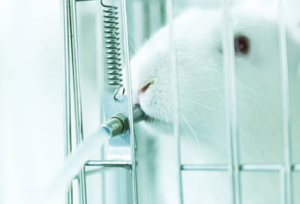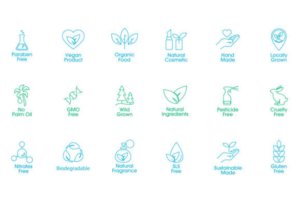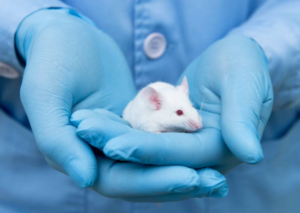A Deep Dive into Cruelty-Free Certifications

In the beauty industry, the pursuit of flawless skin, luscious hair, and captivating fragrances often comes with a hidden cost: animal testing. For decades, countless animals have been subjected to painful experiments in the name of cosmetic development. However, in recent years, there has been a significant shift towards cruelty-free practices, driven by consumer awareness and demand for ethical products.
Navigating the complex landscape of cruelty-free certifications can be daunting for consumers. With various labels and claims adorning product packaging, it’s essential to understand what each certification entails and how to distinguish genuine cruelty-free products from those that may still be involved in animal testing.
In this comprehensive guide, we’ll delve into the world of cruelty-free certifications, unraveling the complexities, and empowering you to make informed choices that align with your values.
Understanding Animal Testing in the Beauty Industry
Animal testing has long been a contentious issue within the beauty industry, with ethical concerns regarding the treatment of animals used in cosmetic experiments. Understanding the historical context and current practices of animal testing is crucial in grasping the urgency and importance of cruelty-free certifications.
Animal testing for cosmetic purposes dates back several decades, with the earliest experiments conducted in the mid-20th century. Initially, animals were used to assess the safety of cosmetic ingredients and formulations, often subjected to crude and painful tests without any consideration for their welfare.
These tests typically involved applying substances to the skin or eyes of animals to observe potential adverse reactions. Rabbits, in particular, were commonly used in eye irritation tests, where chemicals were dripped into their eyes, causing discomfort, inflammation, and sometimes permanent damage.
In many countries, regulatory agencies have historically required cosmetic companies to conduct animal testing to demonstrate the safety of their products before they can be brought to market. These requirements have perpetuated the cycle of animal testing, despite scientific advancements that have rendered such tests obsolete.
Furthermore, some companies voluntarily engage in animal testing to ensure compliance with international regulations or to protect themselves from potential liability. This practice reflects a lack of commitment to cruelty-free principles and underscores the challenges faced by brands striving to eliminate animal testing from their supply chains.
The use of animals in cosmetic testing raises significant ethical concerns, as it involves subjecting sentient beings to pain, suffering, and distress for human benefit. Many consumers find it unacceptable that animals should bear the burden of safety assessments for cosmetic products, especially when alternative testing methods are available.
Moreover, there is growing skepticism about the scientific validity and relevance of animal tests in predicting human responses to cosmetic ingredients. The physiological differences between humans and animals, as well as variations in skin sensitivity and metabolism, limit the reliability of animal-based test results and raise doubts about their applicability to human health.

Alternatives to Animal Testing
In recent years, there has been a concerted effort to develop and promote alternative methods to animal testing in the beauty industry. These alternatives, which include in vitro (test tube) assays, computer modeling, and human cell-based assays, offer more accurate, reliable, and humane ways to assess the safety of cosmetic products without the use of animals.
Organizations such as the European Union Reference Laboratory for Alternatives to Animal Testing (EURL ECVAM) and the Interagency Coordinating Committee on the Validation of Alternative Methods (ICCVAM) play a pivotal role in validating and promoting alternative testing methods globally.
Despite the availability of alternative approaches, the transition away from animal testing remains a complex and multifaceted challenge. Regulatory barriers, industry inertia, and the need for further research and validation of alternative methods hinder progress towards a cruelty-free future.
In response to growing concerns about animal welfare, the cruelty-free movement has gained momentum in recent years. Consumers are increasingly seeking products that are not tested on animals, prompting many companies to adopt cruelty-free practices.
Cruelty-Free Certifications: Decoding the Labels
In recent years, as consumer awareness and demand for cruelty-free products have increased, various organizations and certification bodies have emerged to provide guidance and assurance to shoppers. These certifications aim to distinguish products that have not been tested on animals from those that have undergone animal testing at any stage of development.
- Leaping Bunny Certification:
Administered by the Coalition for Consumer Information on Cosmetics (CCIC), the Leaping Bunny certification is widely regarded as one of the gold standards in cruelty-free certifications. Products bearing the Leaping Bunny logo undergo a rigorous screening process, ensuring that they meet the highest cruelty-free standards.
To qualify for Leaping Bunny certification, brands must adhere to strict criteria, including:
- No animal testing conducted by the company, its suppliers, or any third parties involved in the product’s development.
- Verification that ingredients and formulations are not tested on animals, both domestically and internationally.
- Regular independent audits and inspections to ensure compliance with Leaping Bunny’s standards.
The Leaping Bunny certification provides consumers with confidence that the products they purchase are genuinely cruelty-free and have undergone thorough vetting to uphold ethical principles.
- PETA’s Beauty Without Bunnies:
People for the Ethical Treatment of Animals (PETA) offers its Beauty Without Bunnies certification to companies that pledge not to conduct or commission animal testing. Products bearing the Beauty Without Bunnies logo are listed on PETA’s cruelty-free database, providing consumers with a convenient resource to verify a brand’s cruelty-free status.
PETA’s criteria for cruelty-free certification include:
- No animal testing conducted by the company or its suppliers for any product or ingredient.
- A signed statement from the company affirming its commitment to cruelty-free practices.
- Regular verification and updates to ensure ongoing compliance with PETA’s standards.
By consulting PETA’s cruelty-free database or looking for the Beauty Without Bunnies logo on product packaging, consumers can easily identify cruelty-free options and support brands that prioritize animal welfare.
- Choose Cruelty-Free (CCF) Certification:
Choose Cruelty-Free (CCF) is an Australian-based organization that offers a cruelty-free certification program for beauty and personal care products. CCF’s certification is recognized internationally and provides consumers with assurance that a product has not been tested on animals.
To receive CCF certification, brands must meet stringent criteria, including:
- No animal testing conducted by the company, its suppliers, or any third parties involved in the product’s production.
- A comprehensive ingredient assessment to ensure that no animal-derived ingredients are used in the product.
- Regular audits and reviews to verify compliance with CCF’s standards.
CCF’s certification program helps consumers make informed choices about the products they purchase, supporting brands that adhere to cruelty-free principles.
- Cruelty-Free International:
Formerly known as the BUAV (British Union for the Abolition of Vivisection), Cruelty-Free International offers a globally recognized cruelty-free certification program. Products with Cruelty-Free International’s certification bear the Leaping Bunny logo, indicating that they meet the organization’s stringent cruelty-free standards.
Cruelty-Free International’s criteria for certification include:
- No animal testing conducted by the company, its suppliers, or any third parties involved in the product’s development.
- A commitment to using only cruelty-free ingredients and formulations in the product.
- Independent verification and auditing to ensure ongoing compliance with Cruelty-Free International’s standards.
By choosing products with Cruelty-Free International’s certification, consumers can support brands that are committed to ending animal testing and promoting ethical practices.
- Vegan Society Certification:
While not exclusively focused on animal testing, the Vegan Society’s certification indicates that a product does not contain any animal-derived ingredients and has not been tested on animals. Products with the Vegan Society’s certification are suitable for vegans and vegetarians, offering a cruelty-free and ethical option for consumers.
In addition to these certifications, it’s essential for consumers to research and verify a brand’s cruelty-free claims beyond the labels on their products. Some companies may use misleading language or imagery to imply cruelty-free status without undergoing formal certification processes. By consulting reliable resources, such as cruelty-free databases and advocacy organizations, consumers can make informed choices and support brands that align with their values.

Challenges and Misconceptions
Despite the availability of cruelty-free certifications, there are still challenges and misconceptions surrounding the cruelty-free beauty industry. One common misconception is the belief that cruelty-free products are inferior in quality or efficacy compared to their counterparts. However, many cruelty-free brands offer high-quality, innovative products that rival those produced by companies that test on animals.
Another challenge is the issue of third-party testing. Some companies claim to be cruelty-free but may contract third-party manufacturers or suppliers that conduct animal testing on their behalf. It’s essential for consumers to research and verify a brand’s cruelty-free claims beyond the labels on their products.
While cruelty-free certifications provide valuable guidance for consumers, legislation plays a crucial role in ending animal testing in the beauty industry. In recent years, several countries and regions have implemented bans or restrictions on cosmetic animal testing, signaling progress towards a cruelty-free future.
Additionally, advocacy groups and animal welfare organizations continue to raise awareness about the ethical implications of animal testing and campaign for stricter regulations to protect animals from unnecessary suffering.
As consumers, we have the power to drive positive change in the beauty industry by making informed purchasing decisions. By choosing cruelty-free products and supporting brands that prioritize animal welfare, we can collectively advocate for a cruelty-free future.

In a world where ethical considerations are becoming increasingly important to consumers, navigating the murky waters of animal testing in the beauty industry can be challenging. However, with the proliferation of cruelty-free certifications and growing awareness about the ethical implications of animal testing, consumers are empowered to make choices that align with their values.
By understanding the various cruelty-free certifications and staying informed about the practices of beauty brands, we can contribute to a more compassionate and ethical beauty industry—one that prioritizes the well-being of animals while delivering innovative and high-quality products. Together, we can navigate towards a future where cruelty-free beauty is the standard rather than the exception.




